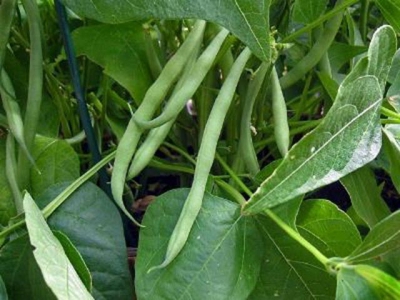Getting your green beans off to a good start

Green bean farming in South Africa has changed considerably over the past twenty years or so. Not long ago, beans were planted and weeded by hand.
Beans planted by hand. Due to the high cost of labour, most producers use planters today.
Now, partly due to the high cost of labour, many producers use planters and herbicides. In some cases, harvesting is also carried out mechanically, especially amongst farmers supplying the processing industry.
Because machine harvesting can cause bruising, beans for the fresh produce markets are harvested mostly by hand. This can be expensive; once transport and tolls are added, a farmer has to charge a high price to remain profitable. However, the cost of labour can be partly ameliorated by careful planning. Due to the seasonal nature of labour employment, it pays to plant the beans so they are ready for harvesting when there are extra workers on the farm.
The importance of disease-free seeds
Seed quality requires careful consideration. The amount of seed required and the cost involved often tempt farmers to choose the cheapest seed. But this is usually locally produced and often infected with bacterial diseases. This means that the cheapest seed can end up becoming the most expensive due to yield and quality loss, as well as the cost of extra spraying.
Years ago, for example, it was common practice to use cheap seed of the Wintergreen variety. As the name suggests, it was fairly tolerant of cold, so it enabled growers to plant early and get their green beans onto the market first, when prices were higher. Also, the relatively low cost of the seed lowered the potential financial risk if a severe frost wiped out this early planting.
Wintergreen had two problems, however. Firstly, the locally grown seed was invariably infected with bacterial disease.
Secondly, the cooler, drier weather was usually not conducive to the development of the bacterial diseases at the time of planting; instead, these diseases would manifest only towards the end of harvest when the rains started.
For their second planting, farmers would then change over to expensive, more productive varieties, planted with disease-free seed. But the bacterial diseases from Wintergreen would then spread to these varieties and cause damage throughout the remainder of the planting season. The lesson is clear: ascertain that the seed is free of disease before purchase.
Bean seed should never be produced under overhead irrigation as this provides the ideal conditions for the development of bacterial diseases. This is true even for dry areas such as the south-west of the country.
Quarantined seed
In the US, most seed is produced in Idaho. This is a ‘quarantine state’: any new seed introduced there must first be planted under quarantine before permission is granted for seed production. Frequent inspections are conducted to ensure that all seed produced in Idaho is disease-free.
As an extra precaution, during grading, fungicide-treatment and packing, any seed with a blemish is removed, ground up and sprayed onto a highly susceptible variety in a laboratory under ideal disease conditions. If disease symptoms appear, the entire batch of seeds is rejected. As a result, many varieties in the US have no need to be resistant to bacterial diseases – all the seed used is free of bacteria.
Unfortunately, efforts to set up a similar system in the dry south-west region of South Africa some years ago failed to come to anything. Thus South Africa lost an opportunity to produce safe local seed in a quarantined zone.
Có thể bạn quan tâm
Phần mềm

Phối trộn thức ăn chăn nuôi

Pha dung dịch thủy canh

Định mức cho tôm ăn

Phối trộn phân bón NPK

Xác định tỷ lệ tôm sống

Chuyển đổi đơn vị phân bón

Xác định công suất sục khí

Chuyển đổi đơn vị tôm

Tính diện tích nhà kính

Tính thể tích ao hồ



 Preparation and planting of green beans
Preparation and planting of green beans  Green beans: the basics
Green beans: the basics